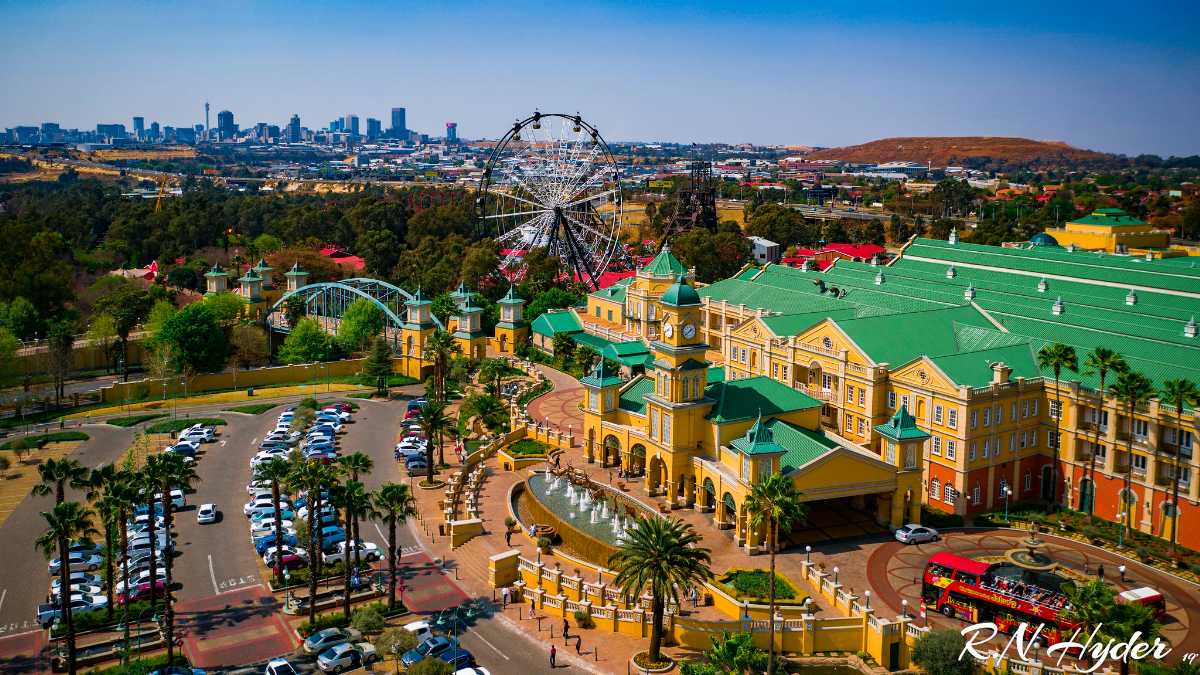Indicators on Johannesburg North Attractions You Should Know
Indicators on Johannesburg North Attractions You Should Know
Blog Article
Facts About Johannesburg North Attractions Uncovered
Table of ContentsThe Only Guide to Johannesburg North AttractionsThe Johannesburg North Attractions IdeasJohannesburg North Attractions for BeginnersJohannesburg North Attractions Can Be Fun For AnyoneFascination About Johannesburg North AttractionsThe Buzz on Johannesburg North Attractions
The city expanded on the edge of the Witwatersrand Main Reef, a subterranean stratum of gold-bearing quartz-silica conglomerate that arcs for hundreds of miles underneath the Highveld - Johannesburg North attractions. Many of the gold mines in the city discontinued procedure in the 1970s, however in its day the Witwatersrand gold sector accounted for even more than 40 percent of the world's yearly gold production.Johannesburg has a pleasant environment. Summer season temperatures balance concerning 75 F (24 C); wintertime temperatures average about 55 F (13 C) and only periodically dip listed below freezing. The city appreciates concerning eight hours of sunlight daily in both winter season and summertime. Rain averages regarding 28 inches (700 millimetres) per year, however the overall varies considerably from year to year.
What rain the city receives drops practically exclusively in the summertime, commonly in amazing late-afternoon electric tornados. Air pollution presents a considerable problem, particularly in the winter season, when thermal inversions restrain the westward circulation of air from the Indian Sea. Contamination is most serious in the densely resolved Black towns on the city's perimeter, where many homeowners still rely upon coal for fuel.

Fascination About Johannesburg North Attractions
The equilibrium of the city is occupied by whites. Lodging differs in personality and quality.
Physical growth, although rather restricted by transport, proceeded promptly as migration to South Africa, and Johannesburg in certain, raised significantly.
Many poor residential areas were combined, with bad blacks and whites living together, although the well-off residential areas were normally reserved for whites. This transformed with the political election of the National Event in the 1948 elections, who began to formalise the system referred to as racism. Racism formally marked which suburban areas each race could live in under the Team Areas Act.
The previous system of eleven numbered areas was reorganised in 2006. Marshalltown, as seen from the top of the Carlton Centre. The M1 and M2 run behind the structures, and the southern residential areas prolong past the highway limit. The inner city of Johannesburg lies within the city's Area F. The number of individuals living in the internal city on an informal basis is unknown, as numerous are illegal immigrants. The joblessness, education, and age accounts of the area are all unknown, due to the problem of getting reliable info concerning the area.
The Best Guide To Johannesburg North Attractions
Centred on the CBD, the area consists of the suburban areas of Yeoville, Bellevue, Troyeville, Jeppestown, and Berea to the eastern. To the west it spreads out to Pageview (Johannesburg North attractions) and Fordsburg. There are tiny enterprise zones to the south, such as City West-Denver and Benrose. Around 800,000 travelers pass via the internal city daily, and it operates as a regional purchasing node for site visitors from the southerly suburbs. Yeoville and Bellevue have a mix of house buildings and solitary residential units on tiny lots. The region is situated on a mountainous divide that runs from eastern to west.

Everything about Johannesburg North Attractions
The eastern suburban areas are some of the earliest you can check here areas of Johannesburg, there are huge communities of Jewish and various other European backgrounds, the bulk of the population is English talking. There are three golf training courses as well as a number of secured ridges with viewsites.
Initially developed to house male migrant workers, many have actually been boosted as homes for pairs and families. The suburban area was not traditionally allowed to produce work centres within the area, so almost all of its homeowners are commuters to various other parts of the city.
See This Report on Johannesburg North Attractions
The N1 Western Bypass attaches the north suburban areas with the north-western suburbs. The residential areas in the north suburbs are generally formal, without any considerable locations of informal housing, or real site web estate that does not have a permanent framework. This is a recognized area, there is a trend of land use change from residential to industrial, specifically along primary arterial roadways and around well established nodes.
Roads to the eastern and west are less well created, as there are no freeways taking a trip in that direction. Towards the northern border of the city, the density of advancement reduces, leaving huge areas of untaught land around Midrand.
Johannesburg North Attractions - An Overview
The very first residential area to the north of the central city is Parktown, which lies on a hill overlooking the central city and Hillbrow. It has many well-off residents and Edwardian-style estates, along with the Education and Clinical campuses of the University of the Witwatersrand. The large concrete see here Charlotte Maxeke Johannesburg Academic Hospital dominates the sky line of Parktown.
Report this page